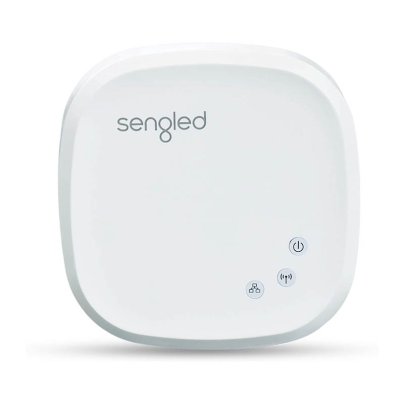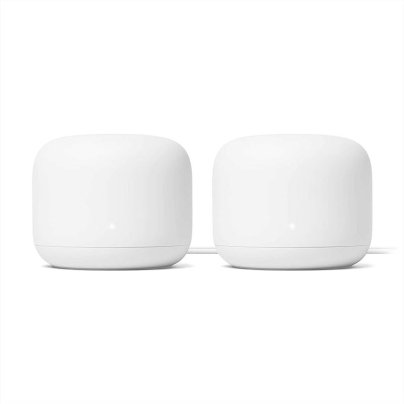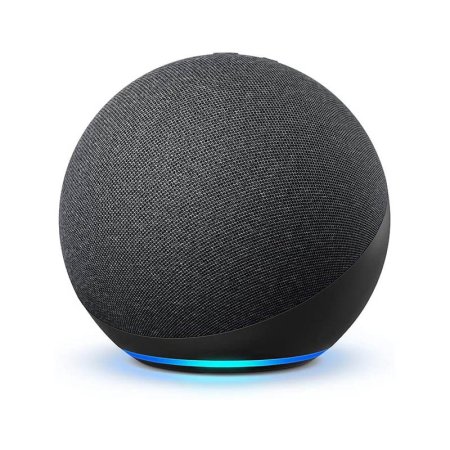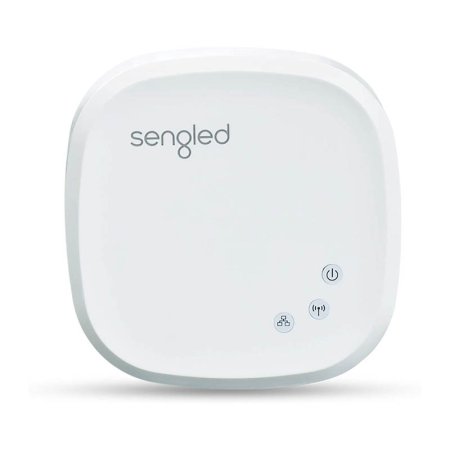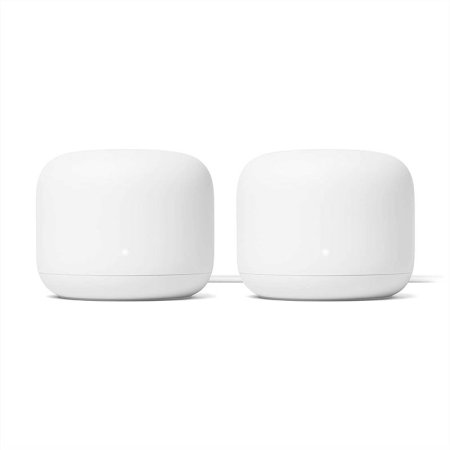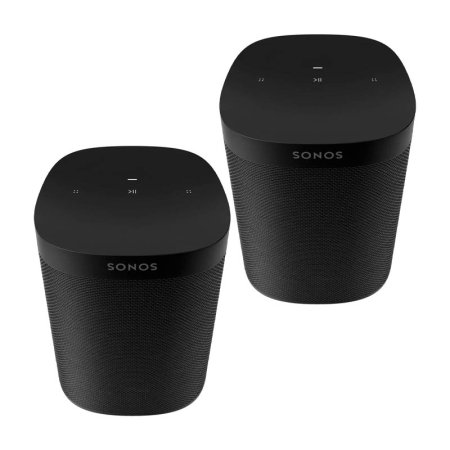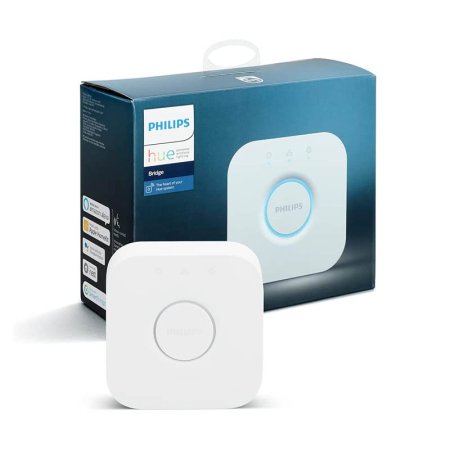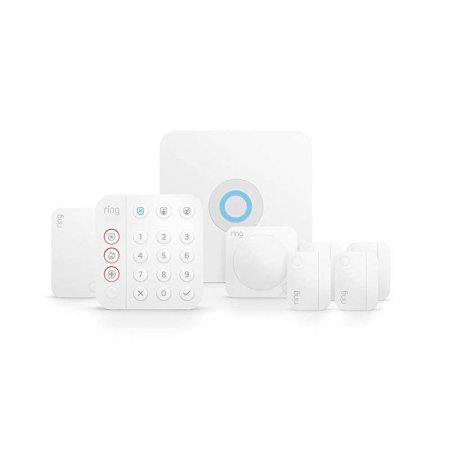
We may earn revenue from the products available on this page and participate in affiliate programs. Learn More ›
Motion sensors, security cameras, refrigerators, heating and cooling systems, door and window locks, light bulbs and lighting fixtures, and even ovens can all be connected to a single smart home system.
This allows you to control your home from a smartphone, tablet, computer, or even by voice or custom programs using protocols like IFTTT (If This Then That) that can activate virtually any part of a smart home system automatically.
Ultimately, the best smart home system for your household depends on your preferred smart home devices and desired level of automation. Keep reading for tips on choosing a setup that suits your needs and budget.
- BEST OVERALL: Amazon Echo (4th Gen)
- BEST BUDGET: Sengled Smart Hub
- BEST WIFI SYSTEM: Google Nest Mesh WiFi System
- BEST SOUND SYSTEM: Sonos Speaker Two Room Set
- BEST SMART LIGHTING: Philips Hue Smart Hub
- BEST FOR SECURITY: Ring Alarm 8-piece kit (2nd Gen)

What to Consider When Choosing the Best Smart Home System
As you add compatible devices to your smart home system, you can control a variety of appliances—from your refrigerator and thermostat to televisions, smart light switches, and home security video doorbells—allowing centralized control of your home.
You can control these smart home gadgets anywhere there’s connectivity using your smartphone, tablet, or computer. For example, you can monitor your front door for an expected package while you are at work, or unlock the door for your children when they arrive home from school instead of having them keep track of a house key.
Before investing in a new smart home system, consider these important product features to be sure you purchase a system that meets your needs.
Network Security
Any device connected to the internet, including something as basic as a smart light bulb, is potentially vulnerable to hacking. This is an inescapable risk of having access to a global network like the internet. However, smart home system manufacturers and service providers are aware of these vulnerabilities and have designed smart devices with built-in security to help protect your home from cyber attacks.
However, security isn’t really a feature you can find in a product description because smart home system manufacturers avoid giving specifications about their security so as not to aid a hacker in penetrating the system. Instead, you can base your decision on a few important factors:
- How frequently is the smart home system app updated? More frequent updates make it difficult for hackers to learn the security protocols.
- How popular is the smart home system? Larger, established companies likely have more money to spend on security features and security professionals.
- What do customers say about the security of the system? You can read customer reviews that reveal security vulnerabilities the manufacturer may have missed. Thankfully, testimonials also help security professionals detect the same issues, and manufacturers can frequently release fixes to address them.
Usability
If you’re new to the concept of a smart home system or you prefer a more basic interface that is easy to understand and practical for carrying out a few small tasks, then you’ll want a system that is simple and straightforward. Avoid overly flexible smart home systems with so many different configuration options that you may quickly become overwhelmed as a novice user.
However, if you’re an experienced user who wants to transition to full home automation, you need a complex smart home system equipped with IFTTT (If This Then That) script support so you can fully customize and control your smart home. Customer feedback is an ideal gauge for deciphering the complexity level of a smart home system because they give a full breadth of experience from novice to expert; you then know what to expect and how your own knowledge and abilities measure up.
Device Support/IFTTT
Any smart home system has a range of devices and computer protocols with which it is compatible, but it won’t be compatible with everything. Before you select a smart home system, decide which devices you want your system to communicate with and which ones to leave out.
Typically, a device will be compatible with the most popular smart home systems, like Amazon Alexa or Google Assistant, as well as other devices made by its own manufacturer. However, some devices offer a broader range of compatible services, giving you a wider variety of smart home systems from which to choose.
One very useful service is the IFTTT (If This Then That) scripting system. If a smart home system and the connected devices are compatible with IFTTT scripting, then you can automate many functions around your home using IFTTT programming protocols. For example, if the smart TV is on, then the living room lights will automatically dim.
Connectivity
How a smart home system connects to your wireless router can be an important factor in determining which smart home system is right for you.
- Corded smart home systems may give the impression that every smart device on the network needs to be plugged directly into the system, but that isn’t the case. Only the smart home system itself needs to be connected to the wireless router with an ethernet cable. This ensures constant communication between the system and the router, instead of relying on the stability of a wireless signal. The downside is that you may have to tether your smart home system to your router with the ethernet cable.
- Cordless smart home systems don’t need to be connected to the wireless router with an ethernet cable. They only need to be within range of the router to communicate with it, which means you can place the smart home system wherever you choose within that range, without worrying about cables. However, you may run into connectivity issues if the wireless signal becomes unstable.
Sensor Range
The sensors on the best smart home devices allow them to communicate with the smart home system and provide the necessary connectivity to make the most out of it. However, more expansive homes, like country bungalows, may be too large for a single smart home system to have the range to connect to all of the home’s smart devices.
Before choosing a smart home system, look at the product information to learn the range of the device and the network on which it operates. For instance, a device that is only compatible with the Bluetooth network will not benefit from a powerful WiFi network, while Z-Wave and Zigbee are both mesh networks that can use compatible smart home devices to boost the network signal. This means that each new device extends the signal strength and range of the smart home system.
However, keep in mind that Z-Wave and Zigbee devices are less popular, so the range of compatible smart devices is significantly less varied than WiFi- and Bluetooth-compatible devices.
Battery Backup
When the power goes out, you likely won’t be able to use the smart light bulbs connected to your smart home system. However other smart devices, like security sensors, should remain on at all times to help keep you and your family safe. To ensure that your smart home system remains active during a power outage, invest in a system and compatible devices that all have a built-in battery backup.
The battery backup most frequently used is a set of AA or AAA batteries to provide power when the electricity goes out. However, if you don’t want to worry about changing batteries on your smart home devices, you can find devices with rechargeable batteries that automatically charge when the electricity is on so they always remain powered during an outage.
Mobile App Usability
When you invest in a smart home system, you aren’t just choosing the system itself, you are also selecting the interface that you will use to control the system. Many mobile apps are very intuitive and simple to use, but some can be clunky, confusing, and so complex that it makes having a smart home system almost pointless.
Before choosing a smart home system, consider browsing its app so you can understand the controls and decide whether you like the interface. You can also gain a sense of how frequently the app is updated, which is an important factor for system security. If the app was updated over a year ago, it is more likely the program has several bugs and vulnerabilities in the coding that can expose the smart home system to hackers.
Professional Monitoring
Professional monitoring services give you the peace of mind that your smart home system is being monitored 24/7 by security professionals. This service is usually included as an additional feature in a smart home security system, but it doesn’t come free. To have 24/7 protection, you’ll need to pay an ongoing subscription fee that can range from as low as $10 per month to higher than $100 per month.
This feature is often a matter of preference. Some people do not like the idea of anyone watching over their home while they are away or sleeping, while others are able to relax more knowing they don’t have to be as vigilant to keep their home secure.
Cost
The cost of a smart home system should always be a consideration, especially if it offers monthly or yearly subscriptions for additional services. Weigh the benefits included with the plan against how often you will actually use the service.
For instance, a subscription that lets you keep up to 1 year of security footage on a smart home security network may be a very attractive option for some people, but others may prefer to view their security camera footage on a more frequent basis and would never need to keep a year’s worth of video files. In this case, the additional price for the subscription isn’t worth the cost for how little you’d use the service.
Our Top Picks
From smart lighting to home security, this roundup includes some of the best smart home devices available today for a variety of purposes.
Best Overall
Amazon Echo (4th Gen)
The Amazon Echo smart home hub is one of the most functional smart hubs available, and it’s compatible with a wide range of smart devices. Powered by Alexa (Amazon’s voice assistant), the Echo hub allows users to control connected devices and interact with Alexa to answer questions or change settings using voice commands.
Beyond connecting and controlling devices, the system is also a high-quality smart speaker, so you can turn on clear-sounding music and podcasts with a single phrase or a tap of your phone. If audio is your main focus, the Echo Dot smart speaker (with clock) is another solid option.
Product Specs
- Control: Voice control
- Size: 5.7 by 5.7 by 5.2 inches
- Capacity: Dozens of smart devices
Pros
- Rich speaker sound
- Multiple layers of privacy protection
- Mobile alerts if Alexa detects fire alarm, breaking glass, and other noises
Cons
- Directional sound speaker as opposed to 360-degree sound
Best Budget
Sengled Smart Hub
The Sengled hub has an indoor range of 150 feet and offers a simple, straightforward interface for your smart home system, including a guided setup process to quickly get you started. The smart home hub connects through WiFi, so you won’t have to worry about an Ethernet cable.
You can connect and control up to 64 Sengled Element devices with this system, including smart light bulbs and smart switches. The Sengled hub also supports voice control with Amazon Echo and Google Home smart speakers.
Control this smart home system with the Sengled Home app or customize automated systems with compatible IFTTT script protocols. If you aren’t ready to jump into IFTTT protocols, the app is easy enough to use without worrying about full home automation.
Product Specs
- Control: Sengled Home app, voice control (Amazon Alexa and Google Assistant)
- Size: 5.6 by 3.5 by 2.2 inches
- Capacity: Up to 64 Sengled Element devices
Pros
- Affordable system
- Clean, intuitive app interface
- 150-foot range
- Ability to automate with IFTTT protocols
Cons
- No built-in voice control
- Not entirely reliable using WiFi; using the Ethernet cord provides a better connection
Best WiFi System
Google Nest Mesh WiFi System
The Google Nest WiFi system comes with two routers that work together, one to plug into your modem and create the WiFi network, and the other to extend it. Combined, they cover up to 4400 square feet, and support up to 200 devices seamlessly, even with high-speed streaming.
Simple to set up and easy to use, this smart home system works wonderfully with all Nest WiFi and Google Home devices, including the Nest Learning smart thermostat and Nest Protect smoke alarm. Voice control allows users to turn devices, lights, thermostats and other smart systems on and off with a verbal request.
As for feeling safe and secure, the Google Nest WiFi system updates regularly and automatically, keeping hackers away. An added level of security comes from the device’s advanced security chip, making it more difficult for hackers to get into your network.
Product Specs
- Control: Voice control, Nest
- Size: Router measures 4.33 by 4.33 by 3.56 inches
- Capacity: Up to 200 devices
Pros
- Fast and reliable WiFi
- Compatible with all Nest WiFi and Google WiFi devices
- Up to 4400 square feet of coverage with both routers
- Automatic updates and advanced security chip
Cons
- A bit pricey, but worth the money if used regularly
- Only comes in white
Best Sound System
Sonos Speaker Two Room Set
Where most smart home systems focus on making life easier, the Sonos smart system makes life more enjoyable. This speaker set is an example of doing one thing really well instead of being mediocre at several functions. Through the Sonos app, users can stream sound from movies, albums, podcasts, and more, creating clear and clean sound, even with full volume.
These can be set up in one room for an explosion of sound, or placed in separate areas to let the sound linger in more places. If two speakers are too many or too few, consumers can purchase a single standalone speaker, three-room, or four-room set. The Sonos speakers are made for pretty much any room in the house, including a humid bathroom.
Running off a lithium battery, these wireless speakers can be set up in any configuration as they’re not limited by the location of power outlets. One drawback is the lack of true surround sound capability, however, they can be paired with a Playbar, Playbase, or Beam to get the desired immersive experience.
Product Specs
- Control: Sonos app, Apple AirPlay 2, voice control
- Size: Speakers measure 10 by 6 by 6 inches
- Capacity: N/A
Pros
- Clear and rich sound at any volume
- Wireless speakers offer flexibility to speaker placement
- Humidity-resistant construction
Cons
- Only used for sound as they don’t connect to other smart home devices
Best Smart Lighting
Philips Hue Smart Hub
Instead of blindly searching for a light switch at night, consider this smart hub from Philips Hue. The smart home system is compatible with other Philips Hue accessories, but its main focus is on controlling up to 50 Philips Hue smart lights with smart switches via one hub for a complete smart home system dedicated to lighting.
This system can be voice-controlled with a connected Amazon Echo, Apple HomeKit, or Google Home smart speaker, and it is compatible with IFTTT protocols, so you can also fully automate your lighting system by setting timers, alarms, and prompts for the lights to turn on whenever you need them without touching the app or saying a word. However, this system does need to be connected directly to your router with an included Ethernet cable.
Product Specs
- Control: Philips Hue app or voice control (Amazon Echo, Apple HomeKit, Google Home)
- Size: Measures 1 by 3.5 by 3.5 inches
- Capacity: Up to 50 Philips Hue smart light bulbs
Pros
- Automatic hub updates with the latest software
- Enables convenient IFFT protocols
- Operates independently of home’s internet (doesn’t slow down WiFi)
Cons
- Requires 4 AA batteries
- Schedules and timers do not back up to a device outside the hub
Best for Security
Ring Alarm 8-piece kit (2nd Gen)
Protecting the home and its inhabitants doesn’t require a complex alarm system. Ring’s 8-piece kit is easy to install, even without following the unboxing instructions, making it ready to use in less than an hour. Set the security system to one of three simple settings and control what’s armed through the keypad or the secure Ring app on your phone or tablet.
Marketed as an alarm system for 1 to 2 bedroom homes, the Ring alarm kit comes with only four sensors. It’s easy to authorize the use of additional Z-wave devices and other users, through the control center’s secure authentication. The wireless coverage range is up to 2000 square feet, which likely includes more doors and windows that need sensors.
This kit doesn’t come with a camera, however, there is a Ring Alarm with an indoor security camera and a video doorbell for those who want virtual eyes on their home.
Product Specs
- Control: Ring app, keypad, voice control with Alexa device
- Included Components: Base station, keypad, range extender, motion detector and four contact sensors
- Capacity: Up to 100 Z-wave devices
Pros
- Battery backups for the main base
- Simple to set up with three sensor modes
- Covers up to 2000 square feet
Cons
- Four sensors are only enough for small dwellings
- Does not come with a security camera (available separately)
Our Verdict
Each smart home system has its strengths. The Amazon Echo is a favorite because of its versatility for controlling household devices while still being functional for entertainment purposes. The Sengled Smart Hub is a terrific base model that can be enhanced with a smart speaker if needed.
How We Chose the Best Smart Home Systems
Comparing different types of smart home systems can be a difficult task as they aren’t all intended for the same purpose. In our research, we weighed the pros and cons of dozens of smart home products. Our list of the best smart home systems comes from certain criteria including:
Brand: Every product we selected comes from a reputable brand that focuses on making quality products and delivering exceptional customer service. We favored companies that have been in the industry a long time and have a proven track record with their smart home products.
Design: Whether intended for general use or a specific purpose, such as lighting or home security, the design’s merit comes from a practical standpoint. We selected products that are more useful than flashy.
Value: Investing in technology can be a gamble. Some brands we selected design their products to be backward compatible, giving us the impression their future products will do the same, hopefully giving today’s smart systems a longer lifespan.
FAQs
Continue reading to find answers to some of the most commonly asked questions about the best smart home system.
Q: How does a smart home system work?
A smart home system cannot work with any electronic device. It must be paired with devices that have compatible computer protocols, sensors, and network connectivity capabilities. If a smart home system and a device are compatible, then you can use the system itself or an associated app to communicate with the device.
In this way, a smart home system is able to communicate with other smart devices on the same network. This lets you use voice commands, app-controlled commands, or computer-controlled commands to set the smart thermostat, turn on lights, view your home through the security camera, lock or unlock doors and windows, and many other functions if you have the required smart devices.
Q: Can a smart home be hacked?
Yes, any piece of technology connected to the internet can potentially be hacked, including smart home systems, smart TVs, and even your wireless router. However, many of these devices operate using an app that’s frequently updated by the manufacturer to help protect you from hackers.
Q: How should I secure smart home devices?
Follow the manufacturer’s recommendations and consider researching additional ways to keep your selected smart devices secure. These measures can include securing your WiFi network, creating unique account passwords, and keeping firmware and software up to date.
Q: How do you troubleshoot a smart home system?
Follow these simple steps to troubleshoot your smart home system.
- The first step in any troubleshooting process is to review your actions to ensure you didn’t make a mistake. It happens to everyone, and checking for human error can often save a lot of time and frustration.
- Reboot the system by turning it off and on again. Many issues can be fixed with this simple step.
- Check the wireless signal and reboot the router if your network connectivity is unstable.
- If the issue continues, consider moving the router to a better location in your home.
- Update all software on your smart home devices.
- Hard reset the smart home system to return it to factory settings. Don’t forget to uninstall and reinstall the associated app from your smartphone as well.
- If you have tried all of the above steps and the system still is not working, you may have to call the manufacturer to help you troubleshoot the problem or possibly complete a warranty return request if the system seems to be faulty.

